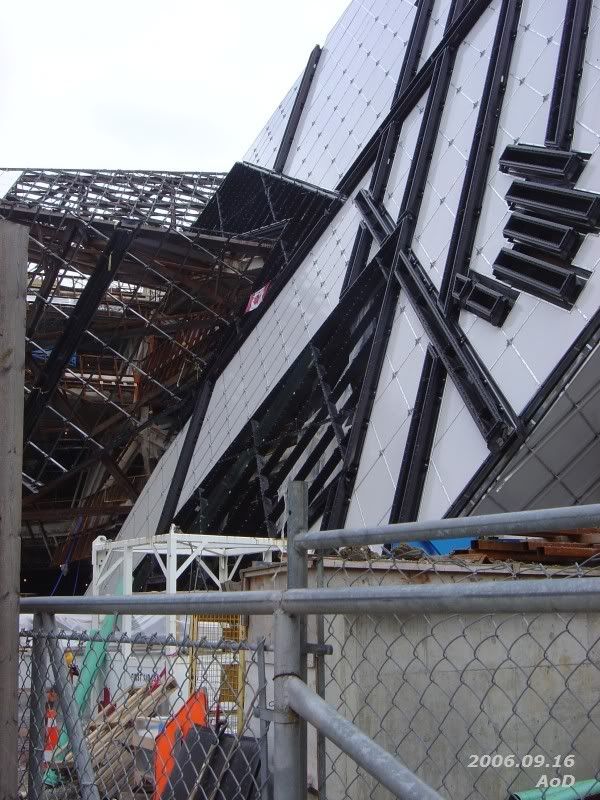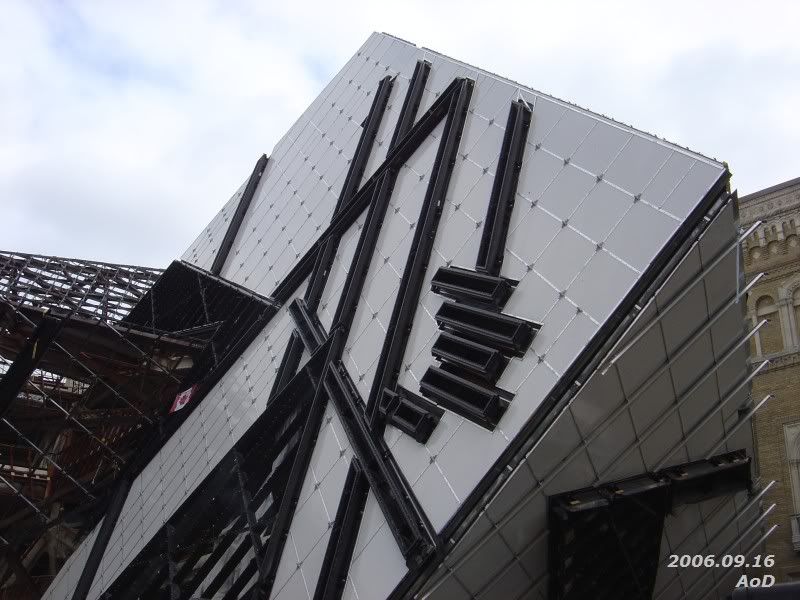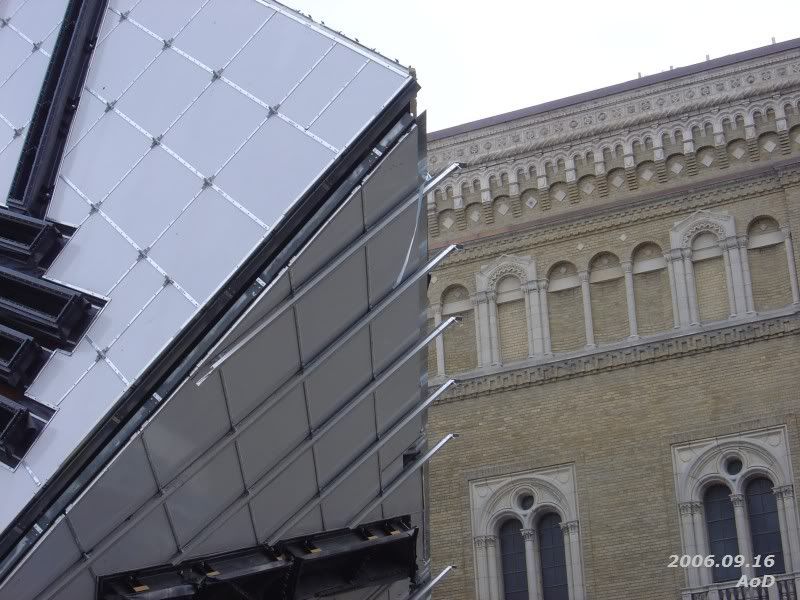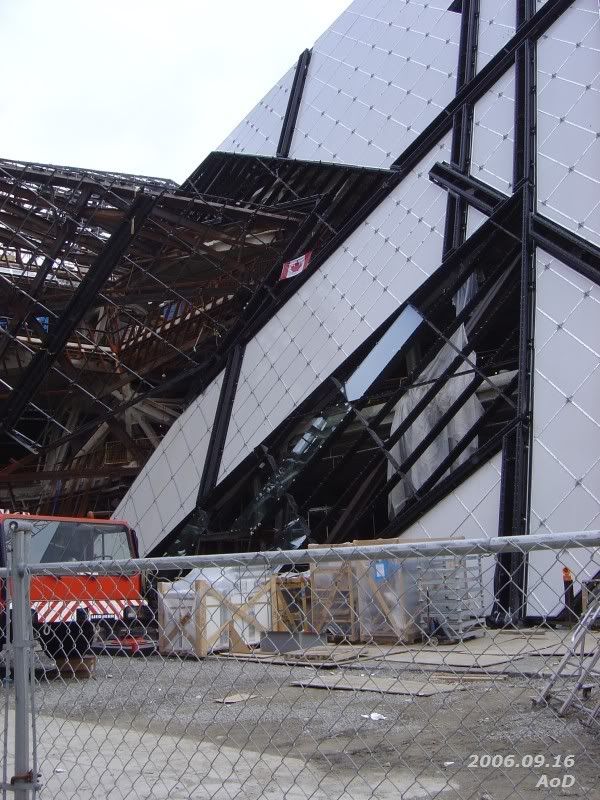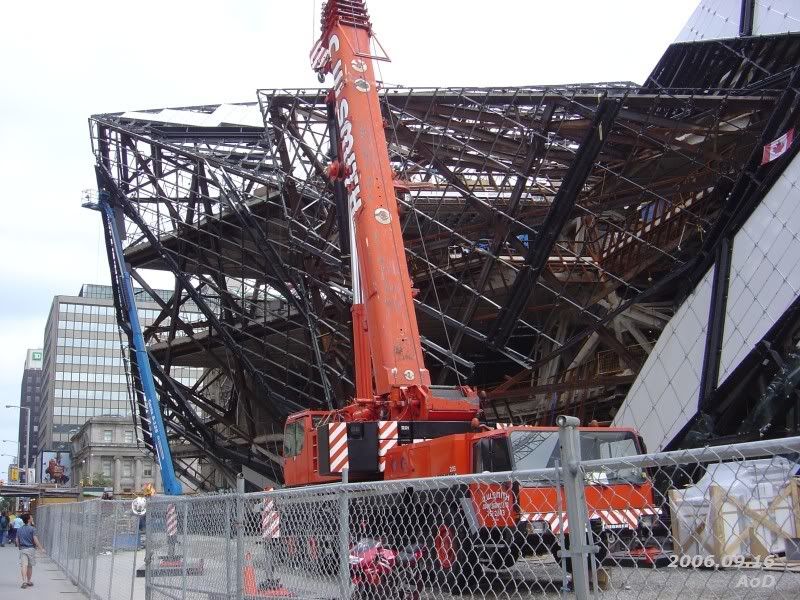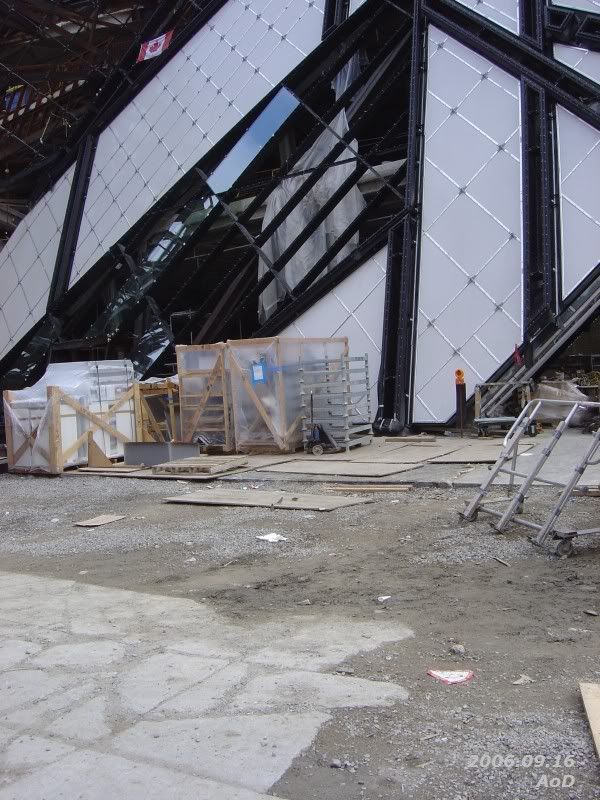"If art transcends technique then you won't notice technique because you're too caught up in the message."
Agreed. But that's not always the desired effect.
"What would be the point of distancing yourself from it?"
None, necessarily, but it depends on the intent of the artist, does it not? Some art attempts to completely 'seduce' one, or to produce a 'pure art' effect in which one is completely absorbed into the work. In this case, technique 'should' disappear. But Wilde, for instance, is too sweeping in his quip: Brecht or Godard (both of whom, admittedly, came along after him), for example, incorporate intentional distanciation fundamentally into their aesthetic - they don't usually intend to make technique invisible, but rather frequently emphasize it. Their intent is different than what Libeskind is apparently assuming all artists seek to accomplish. He's just not correct on this point. Many post-impressionist artists heaped oil onto canvas in great globs, deliberately drawing technique quite unavoidably to one's attention. That's not to say that such works can't be equally emotionally evocative as 'seductive' or 'invisible-technique' art, because they can be, imo. They just accomplish this evocation in different ways, and with different aims and intended meanings. In other words, in some cases one can both perceive the technique and at once have it 'disappear' in a sense, whilst still getting caught up in the message. It seems to me that one need not necessarily supersede the other - they can co-exist and still deliver a message at full emotional or intellectual power. I don't think technique has to vanish for transcendence to occur.
There are just too many possible variables in the equation to sum up the whole shmiel in one lil' quotation. As mentioned, what does the artist intend? But perhaps even more importantly, who's looking or listening, and how are they doing so? Is one focusing at any given instant on the totality of the work or on a soloist? On just one corner of the canvas, or perhaps on a particularly graceful camera swoop? What's the viewer or listener's personal or previous artistic experience been? If it's music in question, does the listener play an instrument? This will surely affect perception and interpretation along with myriad other factors. One can also drift in and out, so to speak: one moment startled and dazzled by a musician's sheer dexterity and mastery, the next drawn into a sublime dream-state, and then perhaps back again. It all just depends on too many elements to be treated so reductively. Art can be almost anything one chooses, and can have almost infinite intents, evoking infinite possible kinds of reactions - declaring that detectable technique is just no good short-changes what art itself can be, as well as how it can be experienced, and limits the definition of artistic 'success' to only a single kind of effect: 'message-getting'.
